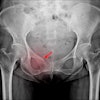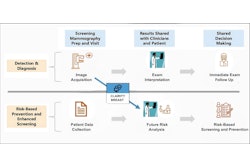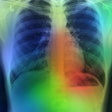An MRI deep-learning algorithm can help quantify neurotoxicity in patients having a significant complication after chimeric antigen receptor (CAR) T-cell therapy, according to a presentation at the 2025 American Society of Clinical Oncology (ASCO) meeting in Chicago.
Researchers from the University of California, San Diego reported that their AI model could quantify immune effector cell-associated neurotoxicity syndrome (ICANS) by assessing T2 fluid-attenuated inversion recovery (FLAIR) MR images.
“This is the first time that deep learning-based MRI quantification is used for evaluating ICANS [post CAR-T cell therapy],” said presenter Ankey Zhu, an undergraduate student at UCSD.
A significant complication
ICANS neurotoxicity is a significant complication following CAR-T cell therapy, occurring in approximately 30%-80% of patients. Its clinical presentation includes confusion, seizure, and even death. Zhu said.
“Although several risk factors have been identified, objective quantitative neuroimaging diagnostic criteria are still lacking, Zhu said.
Some studies have shown that T2 FLAIR changes have been reported in ICANS, but to date, there hasn’t been standardized or quantitative interpretation, Zhu said.
“So this is how deep learning-based MRI comes in,” she said.
Previous work at their institution had validated a 3D U-Net convolutional neural network (CNN) for segmenting gliomas. However, deep learning-based MRI hasn’t yet been used in quantifying ICANS-related brain changes, Zhu noted.
Quantitative biomarker
In their study, the researchers sought to implement a CNN as a potential quantitative marker for ICANS. They also wanted to comprehensively evaluate both liquid biomarkers and clinical characteristics as risk factors in hematological malignancies.
First, the group analyzed all patients with non-Hodgkin lymphoma (NHL) or acute lymphoblastic leukemia (ALL) at their institution between 2018 and 2024. Baseline biomarkers were acquired upon presentation of ICANS; patients who didn’t develop ICANS had their biomarkers collected seven days after CAR-T therapy.
Baseline clinical variables included stage, performance status, and prior receipt of high-dose methotrexate (HD MTX), intrathecal (IT) chemotherapy, central nervous system (CNS) involvement, CNS-directed radiotherapy (CNS RT), and extracranial RT, according to the authors.
Brain MRI exams were collected throughout one year, and the postinfusion brain MRIs were processed with a 3D U-Net CNN to quantify T2 FLAIR hyperintensity volumetrics. In patients with ICANS, labs were collected both during ICANS and seven days after receiving CAR-T cell therapy.
Of the 163 patients included in the study, 73 (58.4%) developed ICANS at a median of seven days after CAR-T cell therapy; 39 were categorized as grade 1-2, and 34 were classified as grade 3-4 after a median of seven days after infusion.
Of baseline clinical factors, IT MTX showed a statistically significant increase in odds of ICANS development after multivariable analysis and accounting for other confounding variables. They also determined that the severity of cytokine release syndrome (CRS) is associated with the severity of ICANS. Elevated inflammatory liquid biomarkers serum lactate dehydrogenase (LDH) were also associated with ICANS after infusions.
Twenty-one patients received 93 postinfusion MRIs. The researchers determined that ICANS had greater deep learning-quantified FLAIR volume. In addition, they found that FLAIR volume increased longitudinally after CAR-T infusion regardless of ICANS status.
The researchers acknowledged the limitations of their study, including its retrospective design and that MRIs were only performed for a subset of patients. There is also the potential for unmeasured confounding factors, according to the researchers.
“The results are preliminary but very promising, and it will support a future prospective trial with more standardized MRIs and liquid biomarkers to better predict and phenotype neurotoxicity,” she said.



















